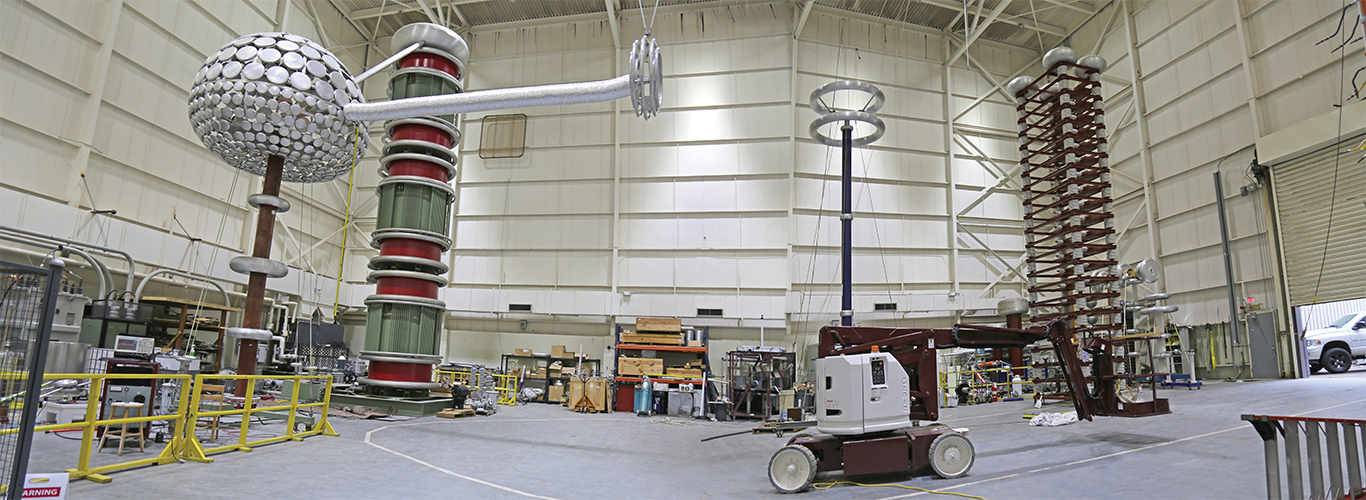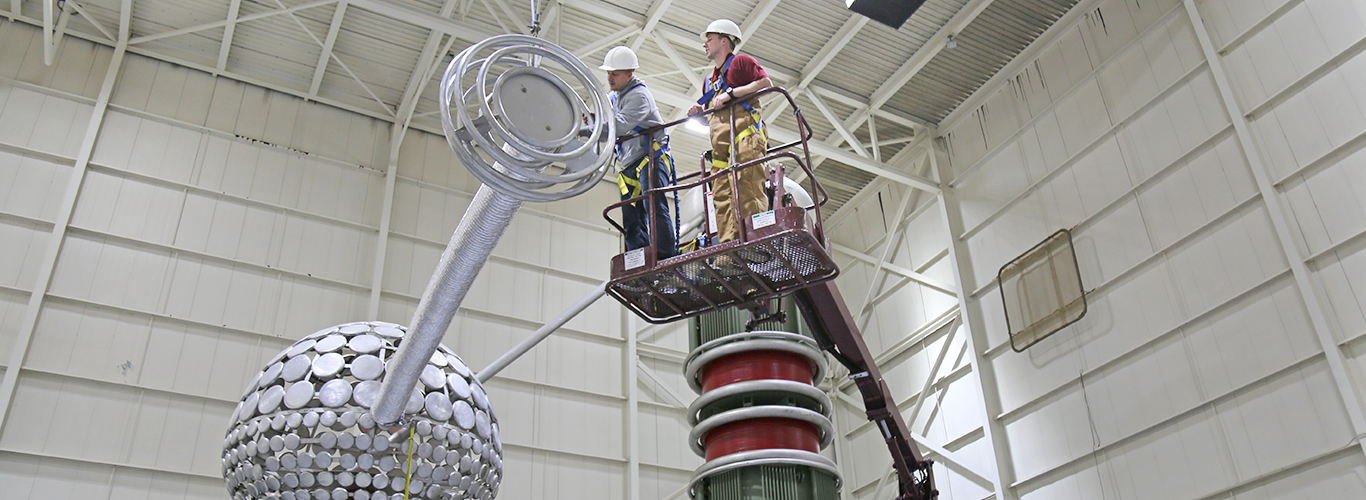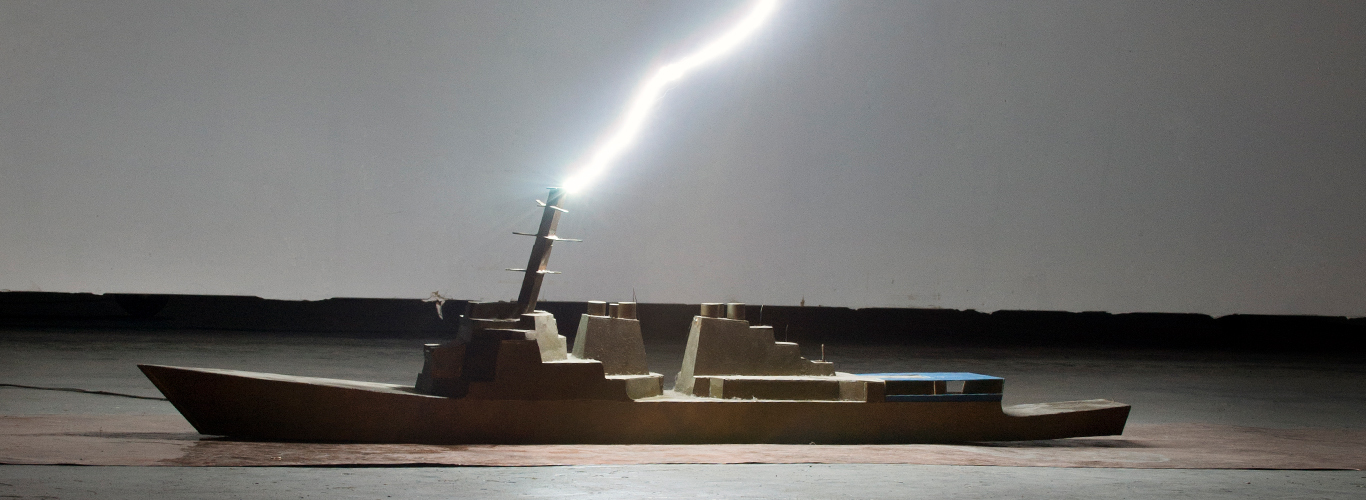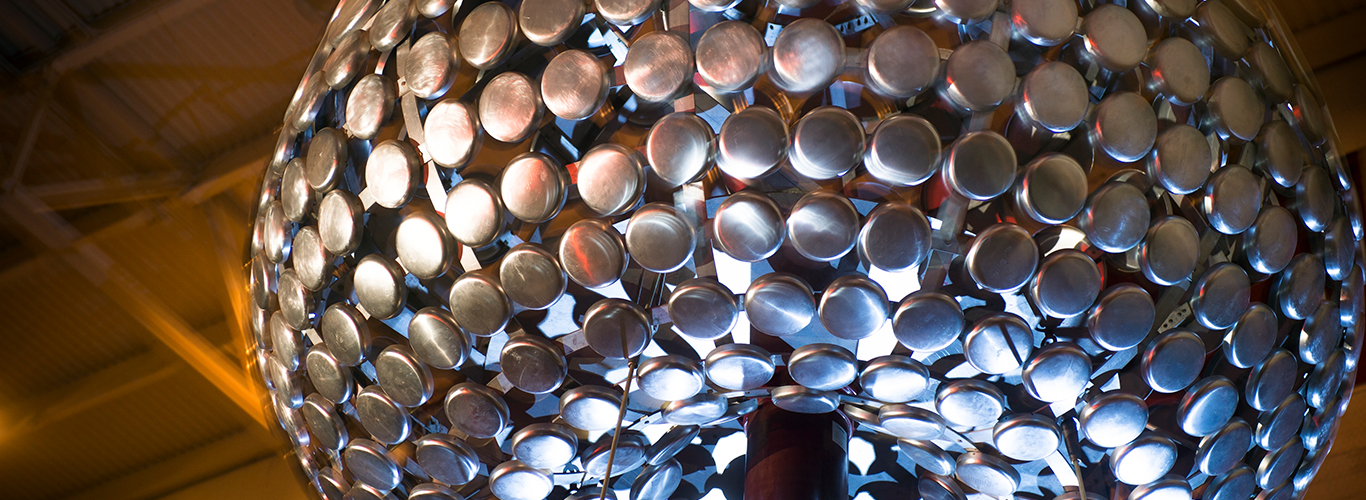- Home |
- High Voltage Laboratory
High Voltage Laboratory
The Paul B. Jacob High Voltage Laboratory at Mississippi State University serves as an independent, non-industrial, university center for high voltage engineering. The laboratory focuses on high voltage research, evaluation, and education. This multi-purpose high voltage facility is designed to meet the evaluation needs of the industry and provides the necessary environment for academic research in high voltage engineering. As an integral part of our national high voltage technology structure, the laboratory serves as a means of strengthening the U.S. position in this specialized technical area.
The lab was constructed in 1977 and is the largest university-operated high voltage facility in North America, enabling full-scale evaluation of large equipment with impulses up to 3,000 kV and 1,000 kV AC-voltage. The main laboratory hall has a floor area of 33.5 x 24.5 m and a minimum ceiling height of 15.2 m. The main laboratory is equipped with a 5-ton crane, full-scale wet test rack, faraday cage, and grounding mesh. As an independent laboratory, test results are held in the strictest confidence
Contact Information
For Testing: David Wallace
For Research: David Wallace
Shipping address:
High Voltage Laboratory
406 Hardy Road
Mississippi State, MS 39762
Lab Capabilities
The main equipment in the laboratory:
- 3000 kV (56 kJ) impulse generator
- 1000 kV (1 MVA) 60 Hz transformer
- 400 kV DC supply
- 250 kV 60 Hz transformer
- 400 kV portable impulse generator
- 400/200/100 kV multi test set (impulse/DC/AC)
- Programmable surge generator (EMC)
- Multiple dielectric test sets
- Climate chamber (-73°C ... +175 °C, 27 cubic ft workspace)
- Porosity test setup (max. 5000 psi)
- Custom accelerated ageing chamber
- 3 tracking and erosion systems (RWDT)
- Standard wet test facility
In addition to standard measurement and data acquisition units, the laboratory can record:
- Radio Interference Voltage (RIV)
- Partial Discharge (PD)
- Corona (night vision camera)
- Capacitance and Dissipartion Factor
Evaluations are performed according to national and international standards as well as customer specifications.
The high voltage laboratory has constructed 3 tracking and erosion (RWDT) test setups.
More information here: tracking and erosion




